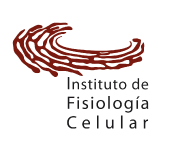Two-Component System Sensor Kinases from Asgardian Archaea May Be Witnesses to Eukaryotic Cell Evolution.
Padilla-Vaca F; de la Mora J; Garcia-Contreras R; Ramirez-Prado JH; Alva-Murillo N; Fonseca-Yepez S; Serna-Gutierrez I; Moreno-Galvan CL; Montufar-Rodriguez JM; Vicente-Gomez M; Rangel-Serrano Á; Vargas-Maya NI; Franco B (2023). Two-Component System Sensor Kinases from Asgardian Archaea May Be Witnesses to Eukaryotic Cell Evolution. Molecules 28
The signal transduction paradigm in bacteria involves two-component systems (TCSs). Asgardarchaeota are archaea that may have originated the current eukaryotic lifeforms. Most research on these archaea has focused on eukaryotic-like features, such as genes involved in phagocytosis, cytoskeleton structure, and vesicle trafficking. However, little attention has been given to specific prokaryotic features. Here, the sequence and predicted structural features of TCS sensor kinases analyzed from two metagenome assemblies and a genomic assembly from cultured Asgardian archaea are presented. The homology of the sensor kinases suggests the grouping of Lokiarchaeum closer to bacterial homologs. In contrast, one group from a Lokiarchaeum and a meta-genome assembly from Candidatus Heimdallarchaeum suggest the presence of a set of kinases separated from the typical bacterial TCS sensor kinases. AtoS and ArcB homologs were found in meta-genome assemblies along with defined domains for other well-characterized sensor kinases, suggesting the close link between these organisms and bacteria that may have resulted in the metabolic link to the establishment of symbiosis. Several kinases are predicted to be cytoplasmic; some contain several PAS domains. The data shown here suggest that TCS kinases in Asgardian bacteria are witnesses to the transition from bacteria to eukaryotic organisms.




